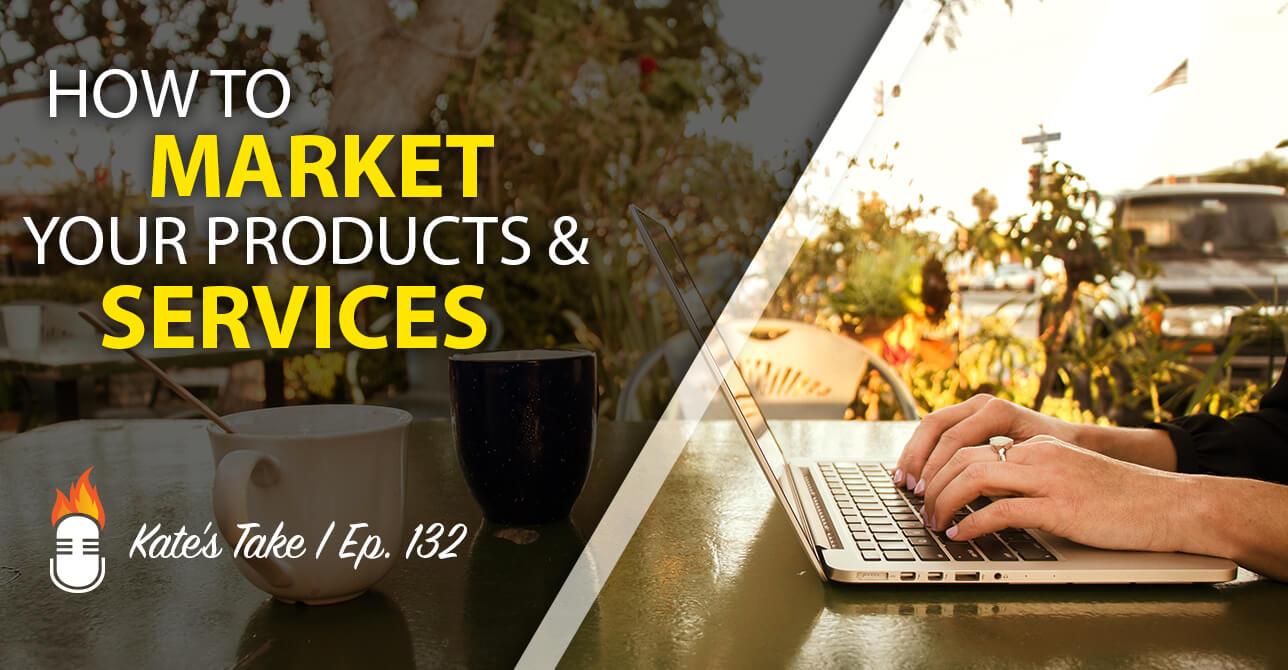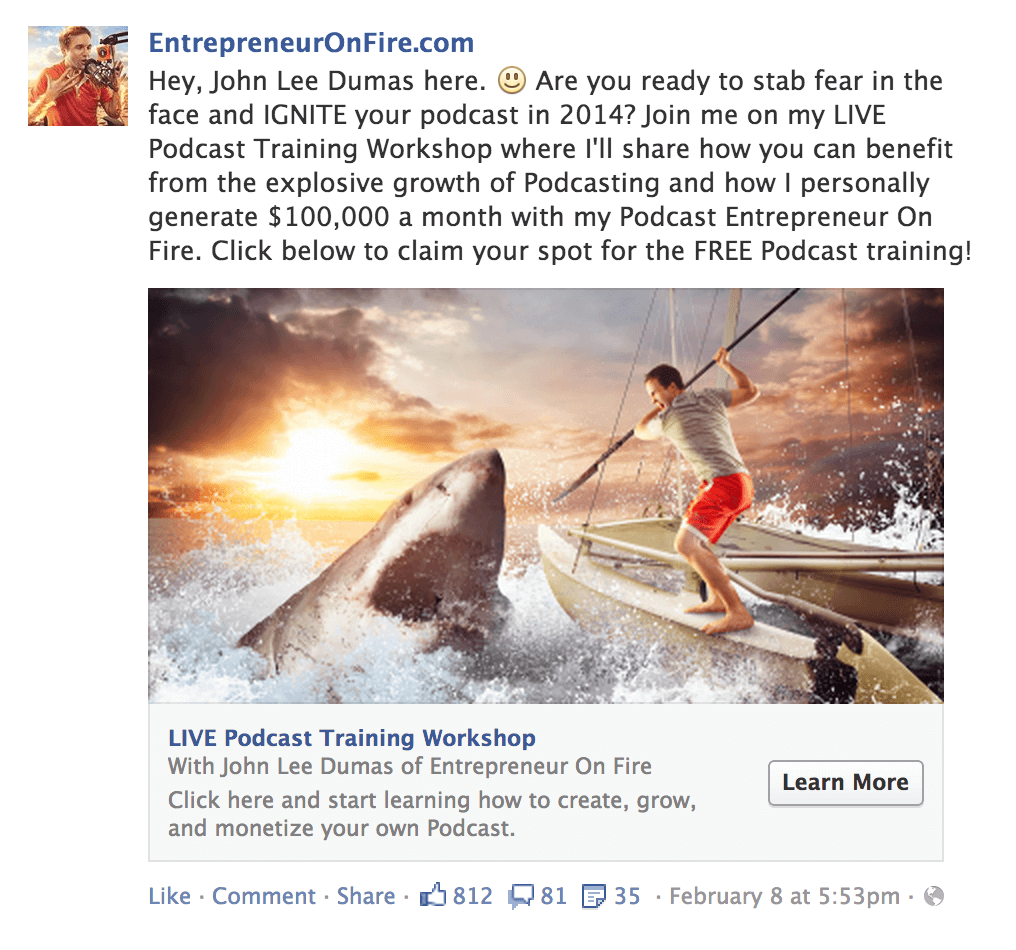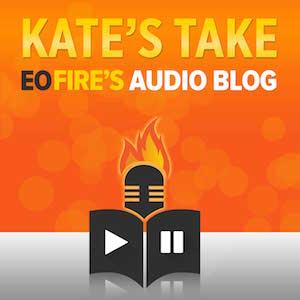
In our last post we talked about how to create the right products and services for your audience by listening to them, validating your idea, gaining proof of concept, and of course, through practicing patience.
But what happens once you have that idea validated and you’ve gotten proof of concept – how are you supposed to share this incredible new product and service with the world so you can continue to grow your business?
Below I’d laid out the top 4 tactics for marketing your products and services. While all 4 might not be right for you right now, hopefully you’ll bookmark this post so that you can refer to it when you are feeling like you need some ideas for how to get the word out about your new product or service.
Top 4 tactics for marketing your products and services
1. Social Media
Marketing your products and services via social media is one of the best ways to generate interest and buzz.
Through social media, you’re able to reach people who may not even be in your existing network or a part of your audience yet, but who are interested in the products and service you’re offering.
Using platforms like Facebook, Google+, Twitter and Instagram to market your products and services definitely takes time, but the benefits are there.
Here’s one example of how you might use social media to generate interest, sign ups, sales and some good old buzz about your products and services!
Facebook Ads: The Podcast Workshop
We’ve used paid Facebook advertising with amazing results to drive traffic to our free, Live Podcast Workshop, which then leads into our flagship community, Podcasters’ Paradise.
The workshop is a 1 hour presentation that provides valuable information to our audience on how to create, grow and monetize a podcast.
When diving into Facebook ads, it’s important that you do some research on the latest updates and changes. Because Facebook updates their rules and the process often, what I’m talking about now may not even exist in a few months.
That said, we use the Power Editor to create our ads, which allows you to target other pages, specific groups of people (based on demographics), and even upload lists to help narrow your search for those who will see your ad.
When submitting an ad, it also helps to have an image that will grab the attention of those who may spend a lot of time scrolling through their Facebook timeline, along with a headline and description that is clear and to the point.
When running Facebook ads, it’s not the time to be wise, clever or witty.
We’re also sure to run the ads within 5 days of the actual Workshop; otherwise it might be too far out for people to really show interest.
On average, when we do advertise, we spend about $150/ day, but that doesn’t mean you can’t run ads for A LOT less; it all depends on your marketing budget.
We’ve been testing Facebook ads for a long time – it’s not easy to nail this stuff the first time. So don’t get frustrated or give up on your ads if you don’t start seeing results immediately.
When you’re testing things out in the beginning, it’s probably best to start with a lower budget until you find a strategy that works best for you.
Notice the image we use here is very attention grabbing, and probably unlike other pictures people will see in their newsfeed. This was intentional to get people to stop and read what we have to say.

2. Webinars (and your follow up)
Webinars are an amazing opportunity for you to provide massive value to your audience all while introducing a product or service that you have to offer.
Since the launch of Podcasters’ Paradise, about 80% of our lifetime membership sales have come as a result of our live Podcast Workshops!
But as important as the content of your webinar, it’s also important that you have a good follow-up sequence in place, which should include personalized touch points with your registrants.
A replay – even if it’s only for a limited time, which I highly recommend – is a good example of a follow up you might send to those who registered for your webinar.
A special, limited-time offer is a good example of a follow up you might also send to those who registered, but who did not buy on the live webinar.
If you can provide a ton of free value via a Webinar to an audience who is looking for help in order to solve a specific problem, then you’re going to have a win/win situation, regardless of whether or not every person buys:
1) People will attend and they’ll receive a ton of value; therefore, they will continue to look to you for help in the future and become a fan (if they aren’t already);
2) People will attend, they’ll receive a ton of value, and they’ll decide that the product or service you’re offering is for them and they’ll purchase!
Want to learn more about how you can create and present Webinars that convert? We recommend Amy Porterfield’s Digital Course Academy for your all inclusive webinar training!
3. Guest appearances
A while back John did an interview on EOFire with Adam Braun, Founder of Pencils of Promise. Awesome interview – Adam has some incredibly amazing things going on, and I definitely recommend you check him out!
Adam also had interviews go live that same week on Lewis Howes’ School of Greatness and Marie Forleo’s Marie TV.
Do you see a pattern here?
Adam ALSO published his book around this time, The Promise of a Pencil.
The reason why guest appearances are so powerful is because they generate hype and buzz about a person, a project, a business, a product or a service with an extended network.
Adam is a pretty well-known guy, but if he had only posted on his own blog and in his own email newsletter regarding his upcoming book launch and his mission, then he wouldn’t have been reaching Fire Nation, the Greats or Marie TV listeners – and these three groups of people combined makes up a pretty massive audience.
Because he set up connections with people who have massive audiences, he was able to spread the word about his book and his mission to a lot more people.
So if you have an upcoming book launch, or even if you’re working on launching a new product or service, reach out to others in your industry who have audiences they’d be willing to share your message with and set up an interview on their podcast, or a guest post on their blog.
4. Interest campaigns
Interest campaigns can be very powerful if you take the time to set them up right.
They’re great for specific products and services that you offer because you know those who are receiving the information are super targeted – they’ve actually requested to learn more, which is why they’ve entered into your campaign.
This is what we’ve recently done with The Freedom Journal. We don’t have an actual product to sell people right now, but we do have the ability to set up an interest campaign so those who want to learn more about the launch of The Freedom Journal can sign up for updates.
This gives us the opportunity to stay in touch with people who are interested in The Freedom Journal project, and it’s a great way to keep warm leads excited about what you have to offer.
So if you’re getting ready to launch a product or service, it’s a great idea to get an opt-in page up so people can sign up to learn more.
This process is also sometimes referred to as a sales funnel: you have people sign up who are interested (and you give them an incredible resource that provides very base-level information about whatever it is you’re offering), and then you send them more valuable information over a period of time, and mixed in with that valuable information you offer them opportunities to buy.
Being able to effectively market your products or services is very important, and luckily, there are a lot of great tactics you can use to help.
What are some ways you’ve found to effectively market your products and services? Share with us in the comments section below!
